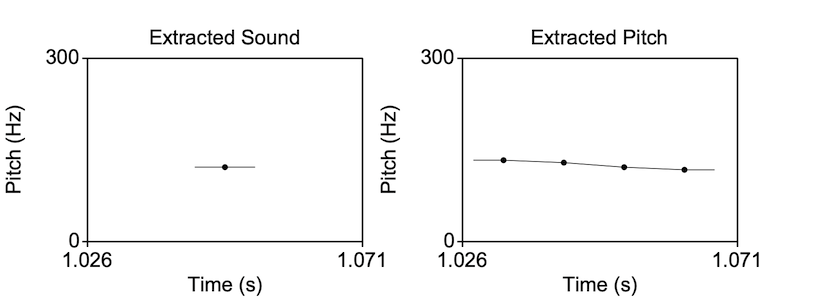Extract part of a Pitch object in Praat
For some reason, Praat does not have an option to extract parts of Pitch objects and other objects that are derived from a pitch analysis. However, in certain cases it is necessary to do the pitch analysis before extracting a part of the signal. Anyone familiar with acoustic phonetic analysis will know that phonetic segments are often shorter than 50 ms. Let’s say we wanted to analyse the pitch of such segments. Using Praat’s standard options, our only option would be to first extract the relevant 50 ms from our Sound object and then apply Praat’s pitch detection algorithm.
Now consider the following quote from David Weenink’s Praat manual (p. 98):
For periodicity detection we need a minimum of three periods in an analysis window. The lower the pitch, the longer a period will be and the longer the analysis window length needs to be. Three periods of a 75 Hz periodic signal last 3/75 = 0.04 s.
Given this information, we cannot really expect our pitch analysis of the 50 ms segment to be very good. It would be much better to first do the pitch analysis on a much longer part of speech before extracting the relevant segment. This difference in quality is exemplified in the figures below:

As you can see, extracting part of the Pitch object rather than part of the Sound object results in a much more complete pitch contour.
The right-most figure was based on a Pitch object that was constructed by first converting the original Pitch object to a Matrix, extracting the relevant columns and converting it back to a Pitch object:
# Converting the selected Pitch object to a Matrix
To Matrix
# Creating a new Matrix based on previously assigned variables
Create Matrix: "'object_name$'_part", part_start, part_end,
num_frames, 'full_name$'.dx, t_start_frame, 1, 1, 1, 1, 1,
"Matrix_'object_name$'[1, start_frame - 1 + col]"
# Converting the Matrix back to a Pitch object
To Pitch
The full script can be found on my GitHub page.